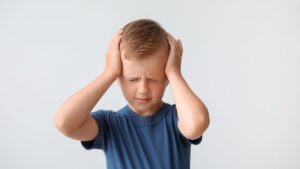What is ear wax?
That funny yellow substance that can sometimes build up in our ears, that we call ear wax is also known as Cerumen.
Cerumen is made up of skin cells and secretions produced by the outer ears. It is a normal, naturally occurring substance that helps your ear stay healthy by protecting the tissues, and helping prevent infection by trapping micro-organisms, dirt and other irritants.
The job of ear wax
Ear wax is pretty important, it is produced by the ear to clean and protect itself.
- Moisturize the ear canal to prevent dry and itchy ears.
- Protect the ear drum by collecting foreign objects such as dust, dirt, bugs from entering.
- Contains chemicals to help fight off infection.
The ear shape and movement from our jaw helps to remove ear wax naturally from the ear canal. Generally, wax requires no intervention, however, sometimes it builds up blocking the ear canal which may lead to discomfort, a blocked sensation, or a temporary hearing loss.
Do I need wax removed?
People that produce excessive wax, have narrow ear canals, wear hearing aids and/or have dermatological conditions can have a build up of wax. Which can cause the self cleaning mechanism not to work as efficiently. When this happens it can cause irritation and discomfort or worst case, reduced hearing so you may wish to have it removed.
Signs to look out for that wax may need to be removed are:
- Pain in the ear
- Feeling like the ear is blocked
- Muffled or difficulty hearing
- Itchy ears
- Tinnitus (ringing in the ears)
- Vertigo/dizziness
- Crackling sounds when swallowing
- Weeping ears
Types of ear wax removal
Professionals use a combination of a softening agent, manual removal and suction or syringing to remove ear wax. There are two main instruments used to remove ear wax.
Syringing
Syringing uses a flow of warm water to break down wax in the ear canal. Syringing should not performed if you have an active ear infection, previous ear surgery or have a hole in your ear drum.
Syringing has an increased risk of causing outer ear infections and ear trauma for this reason microsuction is recommended.
Microsuction
Microsuction uses a specifically designed low-pressure suction machine to remove ear wax under direct visualisation of a microscope. It can be performed on most ears including those where syringing is not an option.
Microsuction by a trained professional is the safest way of ear wax removal, it is gentle and pain free. It is recommended by an Ear Nose and Throat Specialists.

Cotton buds
Ears are self cleaning in most cases and do not require further cleaning. Cotton buds are not only bad for the environment, when used they often push the wax deeper and making it more compact resulting in your ears feeling more blocked. You also run the chance of perforating your ear drum causing more damage and a permanent hearing loss.
Imagine cleaning your ear with a cotton bud, turning around to talk to your partner or child and bump your elbow. Pushing the cotton bud far into your ear and cause a hearing loss.



